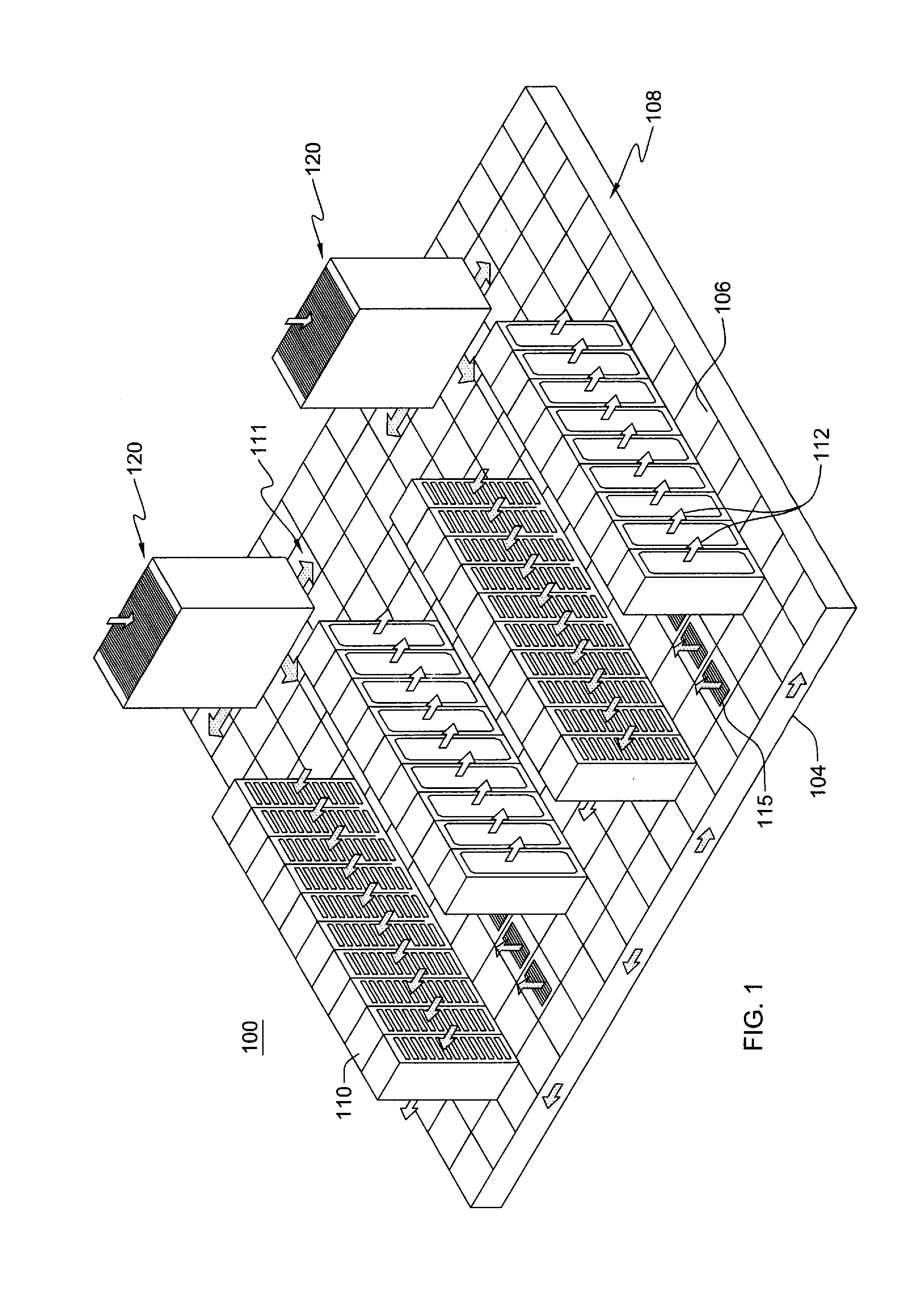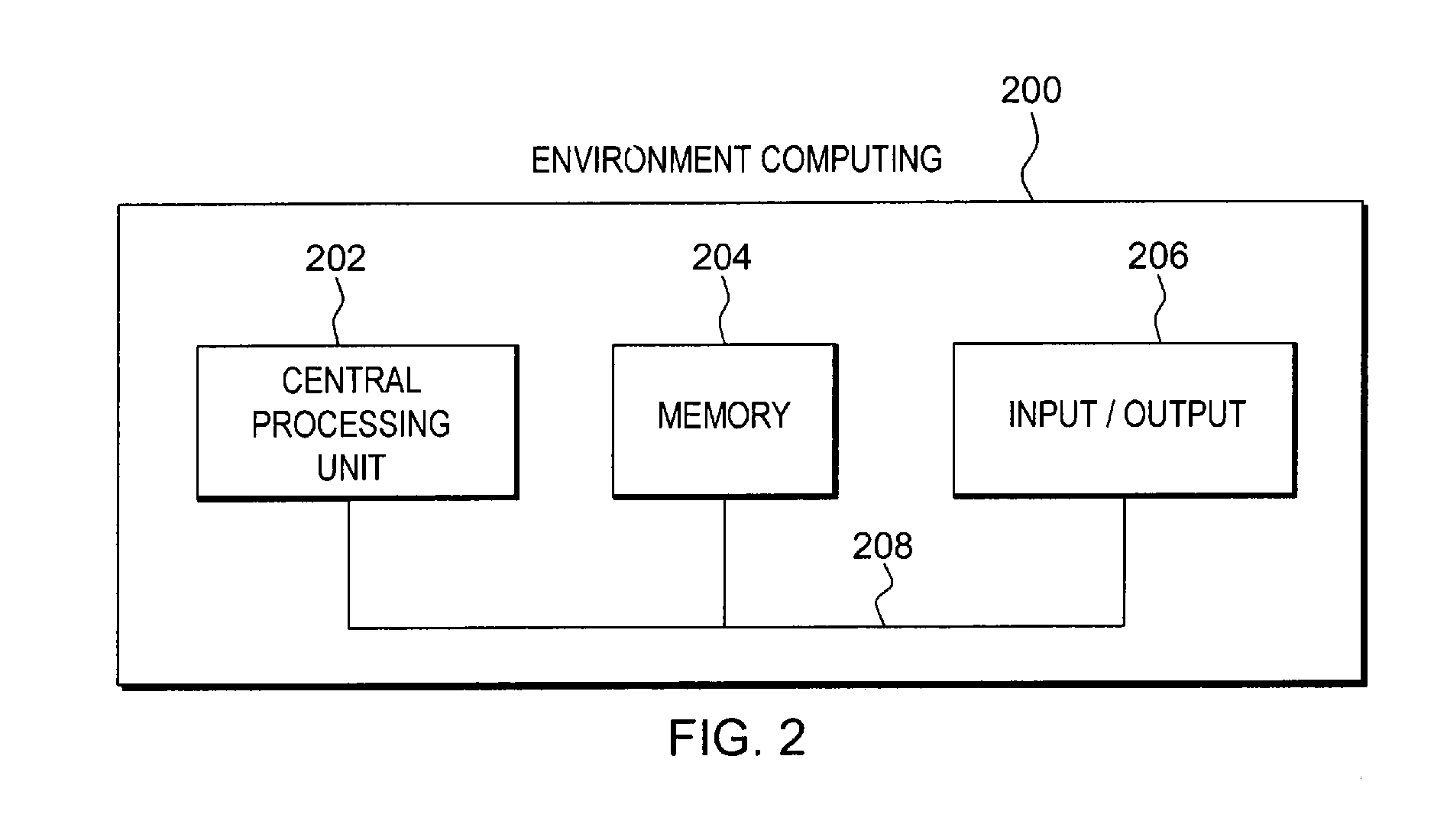Bounded domain modeling with specified boundary conditions and mass balancing
a domain modeling and specified boundary technology, applied in the direction of electrical apparatus construction details, instruments, design optimisation/simulation, etc., can solve the problems of insufficient cooling of electronics racks, significant impact of airflow distributions within data centers on the thermal environment of equipment within data centers
- Summary
- Abstract
- Description
- Claims
- Application Information
AI Technical Summary
Benefits of technology
Problems solved by technology
Method used
Image
Examples
Embodiment Construction
[0044]Computational fluid dynamics and heat transfer (CFD / HT) models may be used in the design and optimization of both new and existing data centers, as well as other bounded domains. Inviscid modeling has shown good speed advantages over the full Navier-Stokes CFD / HT models (over 20 times faster), but is incapable of capturing the physics of the viscous regions of the domain. A coupled inviscid-viscous solution method (CIVSM) or hybrid CFD / HT method for bounded domains is disclosed herein which increases both the solution speed and the accuracy of the CFD / HT model. The methodology includes an iterative solution technique that divides the full domain into multiple regions comprising, for instance, a set of viscous, inviscid and interface regions. The full steady, Reynolds-averaged Navier-Stokes equations with turbulence modeling may then be used to solve the viscous domain, while the inviscid domain may be solved using, for instance, potential flow equations or Euler equations. Onc...
PUM
 Login to View More
Login to View More Abstract
Description
Claims
Application Information
 Login to View More
Login to View More - R&D
- Intellectual Property
- Life Sciences
- Materials
- Tech Scout
- Unparalleled Data Quality
- Higher Quality Content
- 60% Fewer Hallucinations
Browse by: Latest US Patents, China's latest patents, Technical Efficacy Thesaurus, Application Domain, Technology Topic, Popular Technical Reports.
© 2025 PatSnap. All rights reserved.Legal|Privacy policy|Modern Slavery Act Transparency Statement|Sitemap|About US| Contact US: help@patsnap.com



